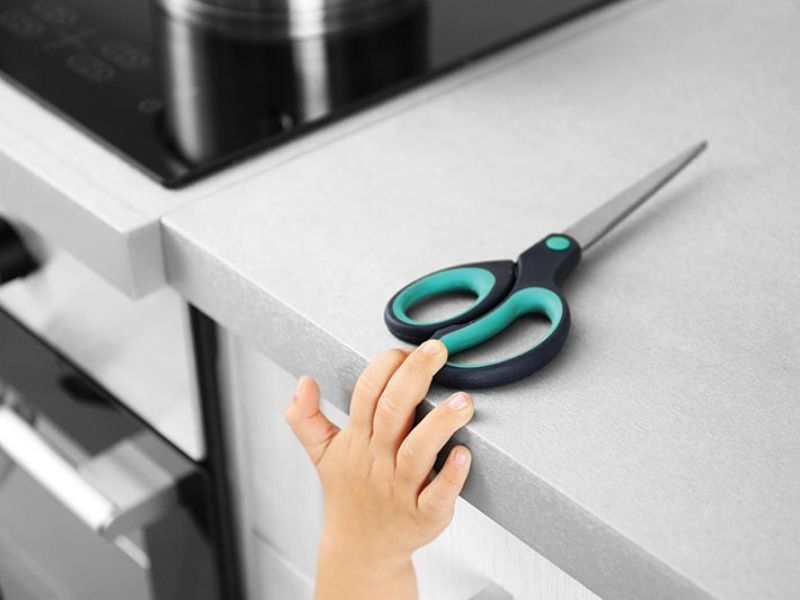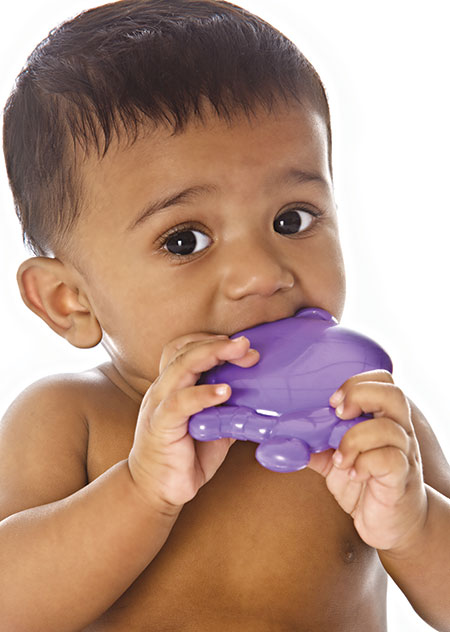
Young children are naturally curious and accident prone. If left unsupervised for even short periods of time, they are likely to place themselves in harm’s way. Therefore it’s important that parents take special care to make their homes child-safe to prevent accidents. Here are 10 common household safety hazards and dangers parents must watch out for.
Plastic bags
Though all state governments countrywide have banned use of plastic bags, they are still readily available and most Indian households tend to hoard and reuse them. Very often they are stored in easily accessible corners of the kitchen and house. Plastic bags have a fatal attraction for children. They love to put them over their heads. This can be fatal as they could block air supply and within seven minutes, a child can die. If confronted with this situation, a parent/caregiver must yank the bag off and administer mouth-to-mouth resuscitation to revive children.
Drowning
A toddler can drown in as little as one inch of water if she falls face down into it. It could be an open bucket, water tank or even just a basin with water. If you must store water, use large jerry cans of 20 litres capacity. They have a small opening into which only a child’s arm will fit.
If your child is in a water-related accident, you need to immediately pull her out, place her on her back and pump water out from her body. Place the heel of one hand on the centre of the chest at the nipple line or push with one hand on top of the other. For an infant, place two fingers on the breastbone. Then press down at least 2 inches. Do chest compressions at the rate of 100-120 per minute or more followed by mouth-to-mouth resuscitation.
Paint
Paints comes in fascinating, attractive colours. As it peels, flakes and crumbles, it becomes easily accessible to children. Lead paints are banned in several countries, but not in India. If children continuously nibble at paint scrapings in the corners of walls, they can develop lead poisoning. Sometimes, cheap toys are also coated with lead  paint. Lead poisoning causes anemia and learning disabilities in children.
paint. Lead poisoning causes anemia and learning disabilities in children.
If you suspect lead poisoning, do a blood test. Levels of more than 5 mcg/dL are unsafe for children. If it reaches 45 mcg/dL, medication is required.
Fire
Children love fire, matchsticks and automatic gas lighters. To make your homes child-safe, keep matchboxes and gas lighters away from their reach, high up on kitchen shelves. If children accidently start a fire, they are in great danger since they don’t know how to douse it. If your child’s clothing is on fire, smother the flames by rolling her in a heavy counterpane or blanket.
Choking
Adults choke on fish and chicken bones, but children are more likely to choke on non-food items such as whistles, clips and small plastic parts of toys.
If a child is choking, administer five back blows by kneeling down behind her. Place one arm across her chest for support. Bend the child over at the waist so that the upper body is parallel with the ground. Deliver five separate back blows between her shoulder blades with the heel of your hand, followed by five abdominal thrusts. These are also known as the Heimlich Manoeuvre. Alternate between five back blows and five thrusts to ensure the object is expelled from her throat.
Electrical devices
In many homes, electrical sockets are fitted low enough for children to insert fingers into them. Sometimes, plug switches are left on permanently. In such cases, electric current is flowing through them constantly. Therefore install plastic blockers on all plug sockets at home.
In the event of a child is under electric shock, avoid touching her. Instead rush to turn off the main electrical switch or fuse.
Balconies and terraces
Children love to climb parapets and balconies. Though in most homes, balconies are grilled, the spaces between the grills may be wide enough for a child to crawl through and fall. Parapet walls should be constructed at adult shoulder height and grills should curve inwards to prevent accidents.
Staircases
Toddlers love crawling and climbing up and down staircases. But, since they are still developing body balance, they are likely to come crashing down. Ensure that gates are fitted at both ends of staircases for the safety of children.
Foreign objects
For mysterious reasons, children love placing objects in their nasal openings and ears. Erasers, buttons, and flowers are the usual suspects.
If your child has shoved an object inside her ear, refrain from removing it yourself. Rush her immediately to a clinic or hospital nearby. If the object has been inserted into a nostril, close the other and ask her to blow out. If she is inhaling inwards instead of exhaling and the object is being pulled further inside, rush her to a hospital.
Television
Children sometimes climb onto furniture to change television channels. If television sets are not securely fixed, they could fall on children and cause dangerous, perhaps fatal head injuries. To make your homes child-safe and prevent such accidents, place the television out of young children’s reach and set firm rules about television viewing and channel surfing.
Also read: Kitchen safety rules all parents should know
(Dr. Gita Mathai is a Vellore-based paediatrician and author of Staying Healthy in Modern India)
























